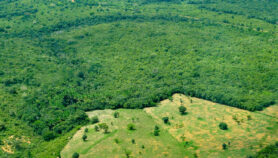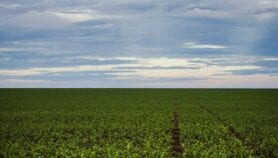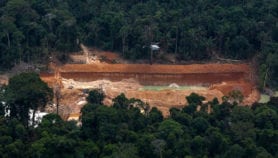By: Catherine Brahic
Send to a friend
The details you provide on this page will not be used to send unsolicited email, and will not be sold to a 3rd party. See privacy policy.
The world of climate change science and policy has been rocked by the discovery that plants produce up to one-third of the second most important greenhouse gas.
The findings are published in Nature today (12 January) by a team led by Frank Keppler from the Max-Planck Institute in Germany.
Until now, researchers thought that most methane was produced by bacteria in environments lacking oxygen, such as the digestive system of cows and Asia’s flooded rice fields (see Major methane emitter identified in Asian rice fields).
But Keppler’s team says plants worldwide produce millions of tonnes of the gas each year, with the greatest share coming from the tropics. They say that the source of 10–30 per cent of annual methane emissions has, until now, gone unnoticed.
The findings are important because, although there is less methane emitted than carbon dioxide (the main greenhouse gas), molecule-for-molecule it has a much bigger effect on climate.
The study is likely to trigger scientific debate about how something of this magnitude could have been missed.
Keppler’s team is convinced they have made no error and say their findings could even shed light on many unexplained phenomena.
These include the large plumes of methane observed above tropical forests (see Mapping methane from space), the fact that rice fields emit less methane when there is less sunlight, and the high levels of methane found in ice formed 2,000 years ago, when plants covered more of the Earth’s surface.
The finding could also explain why the build-up of methane in the atmosphere is slowing down — a trend that could be due to global deforestation.
 |
| Methane packs a bigger punch than carbon dioxide |
The implications of the discovery are significant, and unlikely to be good news.
Climate policymakers have been advocating preserving and planting forests to capture greenhouse gases from the atmosphere.
“We now have the spectre that new forests might increase greenhouse warming through methane emissions rather than decrease it by [storing] carbon dioxide”, writes David Lowe of the New Zealand National Institute of Water and Atmospheric Research. In his accompanying commentary in Nature he describes the work as “remarkable”.
Methane emissions from plants might increase as the world gets warmer. In laboratory experiments, Keppler’s team found that plants produce more methane at higher temperatures, the amount doubling every ten degrees above 30 degrees Celsius.
Scientists also expect that, as atmospheric levels of carbon dioxide rise, plant growth will increase — a phenomenon known as ‘carbon dioxide fertilisation’.
If Keppler’s team is correct, this will in turn increase methane emissions, with the final effect of worsening the greenhouse effect.
“This paper,” concludes Lowe, “will undoubtedly unleash controversy, not the least of which will be political.”
A case in point: a Chinese delegate at a conference on climate change and food security held in London last year (see Climate change ‘will reduce African and Asian harvests) suggested that carbon dioxide fertilisation might help boost agricultural yields in China.
Reference: Nature 439, 187 (2006)













